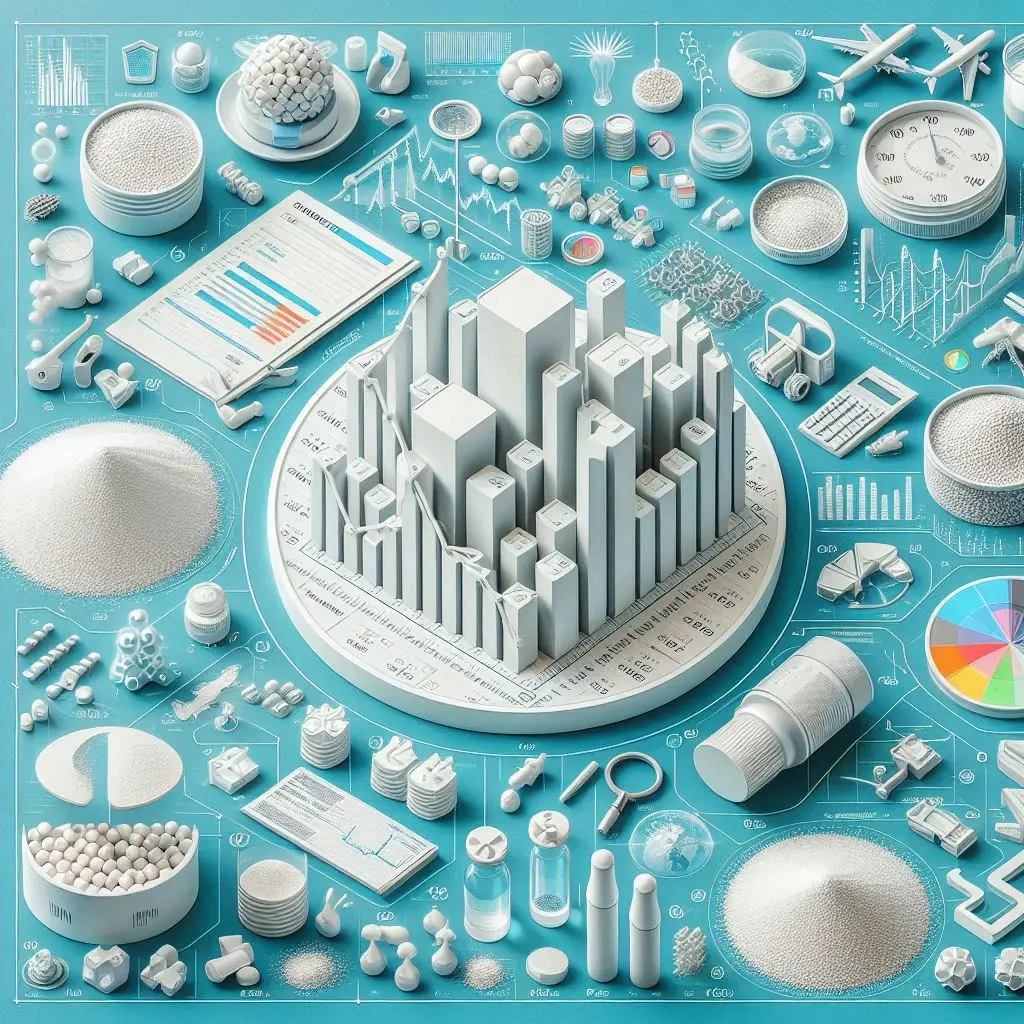
Titanium dioxide price history
Let's talk about titanium dioxide price history in this discussion.
A versatile and often used white pigment in a variety of sectors, including paints, coatings, polymers, and cosmetics, is titanium dioxide (TiO2). Numerous variables, such as the state of the world economy, supply and demand dynamics, technical developments, and environmental restrictions, affect the price of titanium dioxide. A detailed analysis of its price history sheds light on the market's erratic behavior and the causes that influence it.
Dynamic factors such as industrialization, scientific breakthroughs, economic fluctuations, and environmental concerns have impacted the history of titanium dioxide pricing. The history of titanium dioxide utilization from its inception to the current day demonstrates the industry's flexibility and tenacity. Stakeholders need to be on the lookout for and responsive to the many dynamics that impact titanium dioxide pricing in the dynamic global market as it continues to change.
The history of titanium dioxide prices is a dynamic tale that changes with time as the industry adjusts to new conditions. The modern period is defined by a careful balancing act between new trends and enduring problems. The titanium dioxide market's players need to be adaptable and proactive in order to negotiate the challenging terrain that lies ahead. They should do this by using sustainable practices and new technology. The trajectory of titanium dioxide pricing will probably be defined in the next decades by a confluence of economic, technical, and environmental variables as the sector embraces innovation and tackles environmental problems.
Pre-20th century Early Years and Industrialization:
Titanium dioxide has been used as a pigment since the 19th century, and in the early 20th century, industrial manufacturing of the material began to pick up steam. Because of its restricted uses and emerging market, titanium dioxide remained relatively constant in price throughout this time.
Post-World War II Boom (1940s-1960s):
There was a spike in industry and infrastructural construction after World War II, which raised the need for titanium dioxide. Prices increased steadily as the market for TiO2 grew along with industries. The war's aftermath and the geopolitical environment both had a significant impact on how the markets behaved at this time.
Technological Developments and Market Expansion (1970s–1990s): The efficiency of producing titanium dioxide was greatly enhanced by developments in manufacturing techniques and technologies, such as the creation of the chloride process. As a result, there was an increase in supply, which stabilized prices throughout the 1970s and 1980s. However, the market also had to deal with regulatory demands and environmental concerns, which affected pricing as businesses had to adjust to meet new requirements.
Economic Transitions and Globalization (1990s-2000s):
Markets became more globalized and competitive in the late 20th and early 21st centuries. Prices for titanium dioxide fluctuated over this time owing to changes in the global and Asian economies, including the global financial crisis in 2008 and the Asian financial crisis in the late 1990s. The industries were impacted by these occurrences, which in turn affected the demand for titanium dioxide.
Environmental regulations and supply chain challenges in the 2010s:
The titanium dioxide industry faced several important hurdles in the 2010s. Disruptions to the supply chain, such as shifts in the price of raw materials and geopolitical unrest, affected manufacturing costs. Stricter environmental rules also forced the sector to invest in more environmentally friendly manufacturing techniques, which had an effect on supply and demand.
Current Patterns and Prospects for the Future:
According to the latest available statistics, the market for titanium dioxide is still developing. The sector is negotiating obstacles such as the shift to sustainable practices, tighter regulation of the procurement of raw materials, and the continuous improvement in the world economy. Prices are nevertheless susceptible to these variables, which illustrates the intricate relationship between supply, demand, and outside forces.
New Developments and Upcoming Obstacles (2020s–2030s):
The titanium dioxide industry has entered a new age characterized by both enduring difficulties and rising developments in the early years of the twenty-first century. The growing emphasis on environmental responsibility and sustainability is one of the notable developments. Manufacturers of titanium dioxide are investing in research and development of greener alternatives as a result of increasing customer and government pressure for eco-friendly goods and procedures. The transition to sustainability affects raw material procurement as well as manufacturing techniques, which affects the whole cost structure and, ultimately, titanium dioxide prices.
Moreover, the current digital revolution has affected several aspects of the sector, including product distribution and supply chain management. Technological advancements like artificial intelligence and data analytics are being used to improve productivity, expedite logistics, and optimize industrial processes. In a global economy that is linked via digital means, this digital revolution influences pricing strategies in addition to production costs and market competitiveness.
The market for titanium dioxide is still significantly shaped by the geopolitical environment. Geopolitical upheavals, trade difficulties, and local conflicts may all cause supply chain disruptions and price swings. Furthermore, because of the interconnectedness of states in the global economy, geopolitical developments and economic policies in one region of the globe may have a significant impact on titanium dioxide pricing globally.
The industry confronts persistent obstacles in addition to these new developments. The cost and availability of raw materials continue to be major issues, as titanium feedstock is essential to the manufacturing process. In order to maintain a solid supply chain, the industry must manage the challenges of locating raw materials that are produced sustainably and ethically. The struggle for resources is made even more intense by the growing demand for titanium dioxide across a wide range of businesses.
https://www.novintrades.com/products/5?title=titanium-dioxide

